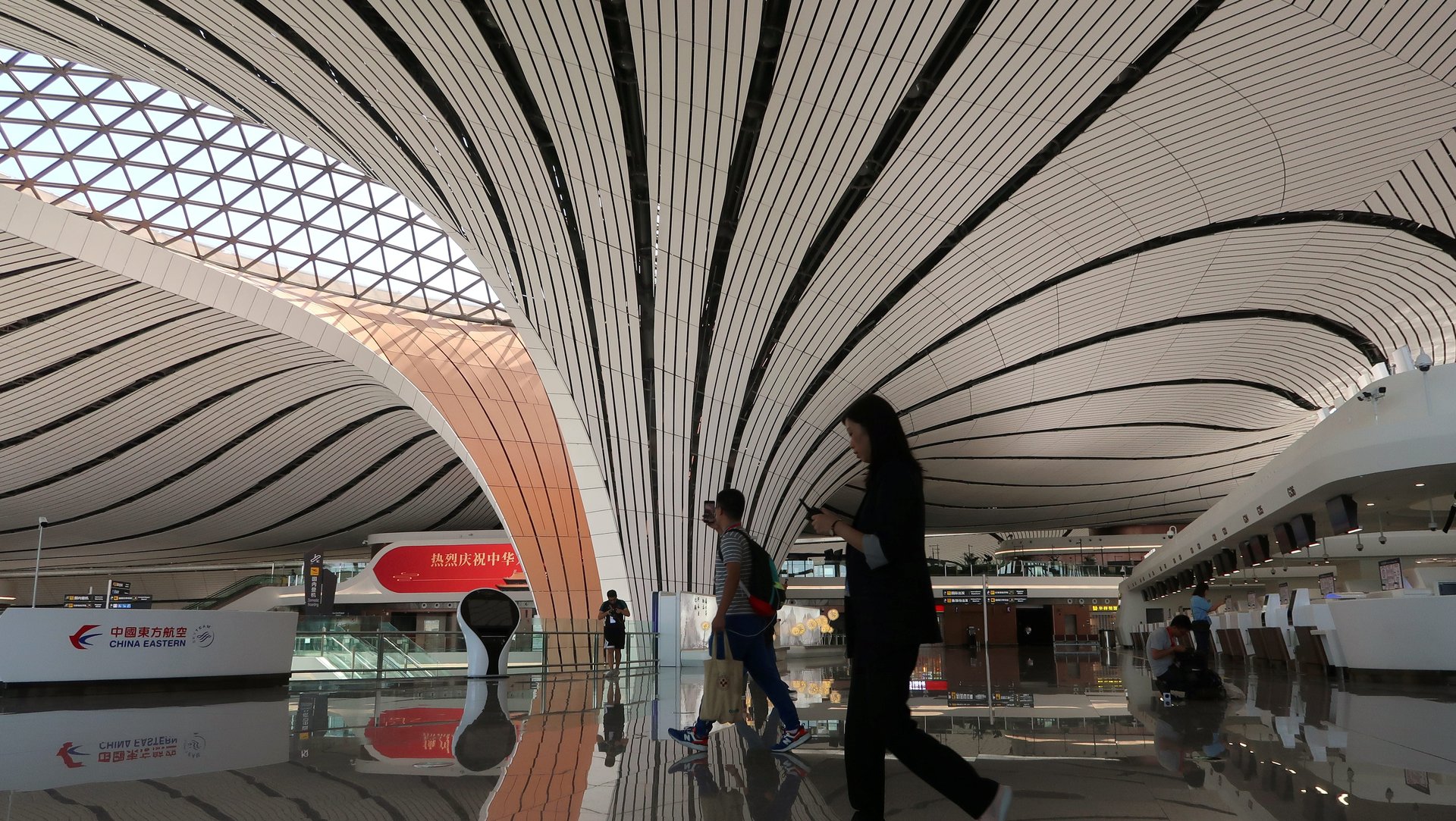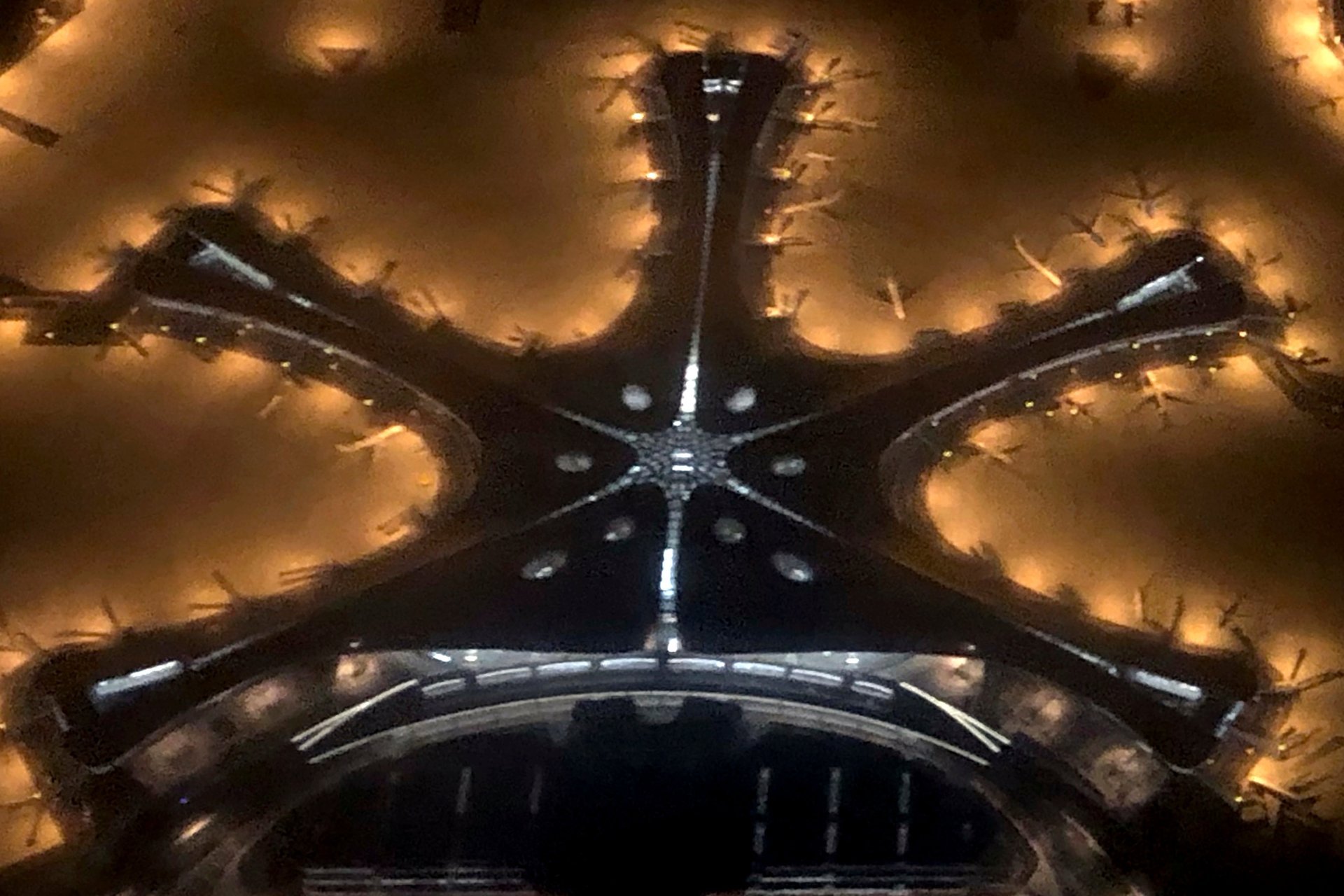Beijing’s massive Zaha Hadid “starfish” airport is open
China’s largest airport is officially open. President Xi Jinping led the inauguration ceremonies at Daxing International Airport’s sprawling main terminal building today. It comes just ahead of the 70th anniversary of the founding of the People’s Republic of China on Oct. 1. Officials hailed the $63 billion transport hub, which includes a network of railways, as “a new powerful source of national development.” Daxing (IATA code: PKX), is 30 miles south of Beijing, and was designed by the late British Iraqi architect Zaha Hadid.


China’s largest airport is officially open. President Xi Jinping led the inauguration ceremonies at Daxing International Airport’s sprawling main terminal building today. It comes just ahead of the 70th anniversary of the founding of the People’s Republic of China on Oct. 1. Officials hailed the $63 billion transport hub, which includes a network of railways, as “a new powerful source of national development.” Daxing (IATA code: PKX), is 30 miles south of Beijing, and was designed by the late British Iraqi architect Zaha Hadid.
Like most public infrastructure projects in China, Daxing is massive. Its main building is touted as the world’s biggest free-standing terminal, and equivalent to 97 football fields. It has four runways for commercial flights, and can accommodate 300 takeoffs and landings every hour, according to airport officials. Its opening, less than five years after construction began, is expected to alleviate the pressure at Beijing Capital International Airport (PEK).
Beijing’s existing airport was built for the 2008 Olympics, and is already running at maximum capacity. It is notorious for delayed flights. Officials say Daxing will be able to handle 100 million passengers a year by 2040, thereby eclipsing Atlanta’s Hartsfield-Jackson International, currently the world’s busiest airport. Beijing Capital is the world’s second busiest airport, according to the Airports Council International.

Hong Kong-based studio Level 8 planned Daxing’s interiors as if it were designing a small city. Apart from duty-free shops and restaurants, Daxing has pet hotels, childcare facilities, work zones, and various stages for public events.
“The new aeropolis is a glimpse into the shape of the cities of the future,” said Simon Chua, executive director of Level 8. He suggests that the airport could even serve as a new paradigm for office complex developments. “Our future work spaces are being influenced by the changing lifestyles of a new generation, as work, entertainment, and hospitality blurs the boundaries to create new opportunities. We hope this scheme will inspire future airport developments, as there is a growing demand for quality work spaces with integrated natural environments, particularly in Beijing.”
Technology too is a big attraction at Daxing. State-owned CGTN reports that the airport has a robot-operated parking system, facial recognition technology to speed up security checks and boarding, and a robust wi-fi service. Roving robot guides will be available to help lost passengers.
Chinese media have already nicknamed Daxing the “starfish airport” because that’s what it looks like from the air. But Hadid, who worked on the project with the French engineering firm ADPI before her untimely death in 2016, described the design as a phoenix (feng huang). The mythical feng huang is an auspicious symbol in the Chinese imagination.
Daxing airport has the trademark sinuous curves and parabolic folds of a Hadid building—its ovoid overhead windows already figure in hundreds of Instagram posts. The radial design is meant to reduce walking time from security checkpoints to the furthest gates. Airport officials have told CNN that passengers would not need to walk more than eight minutes to get to their gate.
China’s two state-owned airlines, China Eastern and China Southern will operate from the new airport. British Airways, Finnair, Malaysia Airlines, Royal Brunei Airlines and Royal Maroc have also planned routes via Daxing.